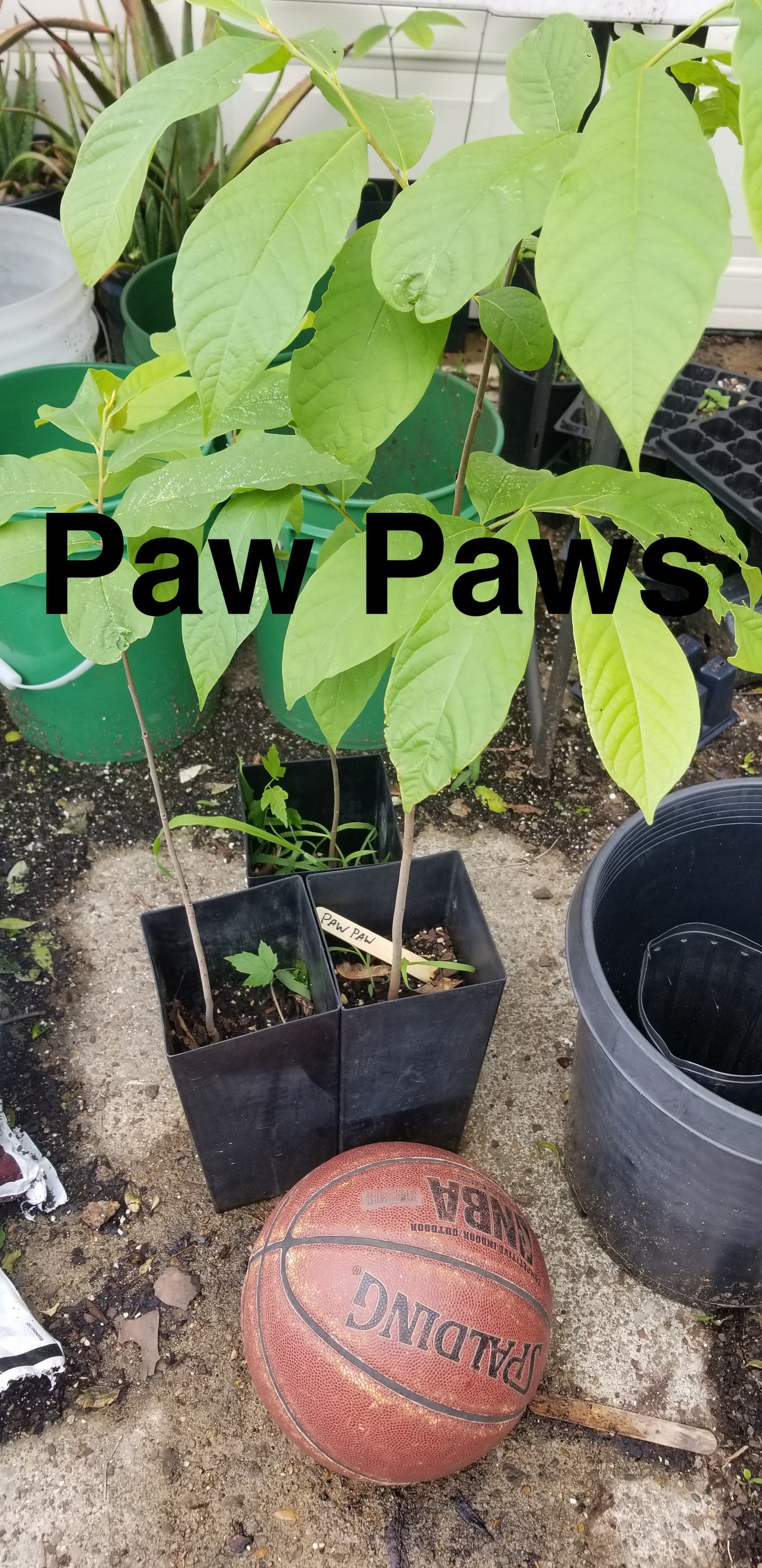Adapted Nursery Store
Paw Paw One Year Seedling Trees (Potted)
Paw Paw One Year Seedling Trees (Potted)
Couldn't load pickup availability
Paw Paw (Asimina triloba) SOLD OUT! Email me at hello@gardenkevin and I'll put you on the notification list.
Seedling from select variety (see below)
Hardy Perennial Tree to USDA Zone 5
Full Sun to Shade
Pest and Disease Resistant
Best in Ground
Tolerant of Black Walnut (juglone)
Two different varieties needed for cross pollination
Delicious -- one of the top rated fruits in taste in the world!
These seeds were selected from an extra heavy yielding wild stand in Nashville, TN. The fruit was extra large -- commercial size, and the flesh was much better in flavor than the vast majority of wild paw paws. The pulp to seed ratio was also quite a bit better than your average wild paw paw. They are adapted to the clay soil forests of Middle Tennessee, but exhibit commercial variety paw paw traits. Best of both worlds.
These trees ship in a tree pot and are best planted in the fall. They have a deep taproot so do best in the ground.
Paw paws are best grown in the shade when young, and in full sun when mature for optimal fruiting. They can be grown in shade quite well, although fruit production is significantly less. They are a great choice for an understory tree in a black walnut, or hickory permaculture guild.
You need two different varieties for cross pollination. Since all of ours are seedlings, any two should work for that purpose. They need to be within 40 feet from each other. One trick that many employ is to plant two or three trees 3 or 4 feet away from each other, forming a little cluster.
Paw paws are native to the Eastern forests of the United States and are the largest native North American fruit. They are cousins to cherimoya, and the only cold hardy, non-tropical member of the annon family of fruits.
Although they are native and adapted to the moist Eastern deciduous forests, it is my experience that they do well in good fruit tree growing situations such as backyard orchards, and even in the wide open sunny Central Valley, CA.
There was a man there about 20 years ago that had an orchard of them. He called the orchard small as he was surrounded by areas where they had thousands of acre almond orchards. To the rest of us homegrowers, the orchard was huge! They did very well and produced quite a bit of fruit that I would seasonly buy at the farmer's market when I lived in the Bay Area, CA (where I also grew paw paws and knew people who grew them successfully.) The Central Valley, CA is sunny, hot, dry, and mild wintered -- not at all like the Eastern forests of the U.S. And he grew them in the open once they were mature.
The point of this story is that they are widely adapted! However, the man in the story wound up ripping them out (noooo!!!) because he decided they would not be commercially viable -- because of the extremely short shelf life. So best thing to do I think is to grow your own paw paws! Don't wait for them to become available at the market in order to enjoy one our realm's greatest delicacies.
Share






